Abstract
In an extension of prior research, four retarded children were trained under an identity matching-to-sample procedure containing features previously shown to produce controlled generalization to novel stimuli. They first were taught to relate a particular handsign to the sample shape, then to maintain the handsign over a delay interval, and then to select from an array the comparison shape that permitted the handsign to be maintained (i.e., the shape identical to the sample). An initial test revealed little generalization of matching to novel stimuli, but after handsigns were trained to these stimuli, accurate generalized matching appeared immediately. The results replicated prior findings and demonstrated particular features of stimulus control sufficient to enable generalized matching. A behavioral account of relational matching was supported. The technique used in this study was shown to be effective in teaching abstract relations to nonverbal retarded children.
Full text
PDF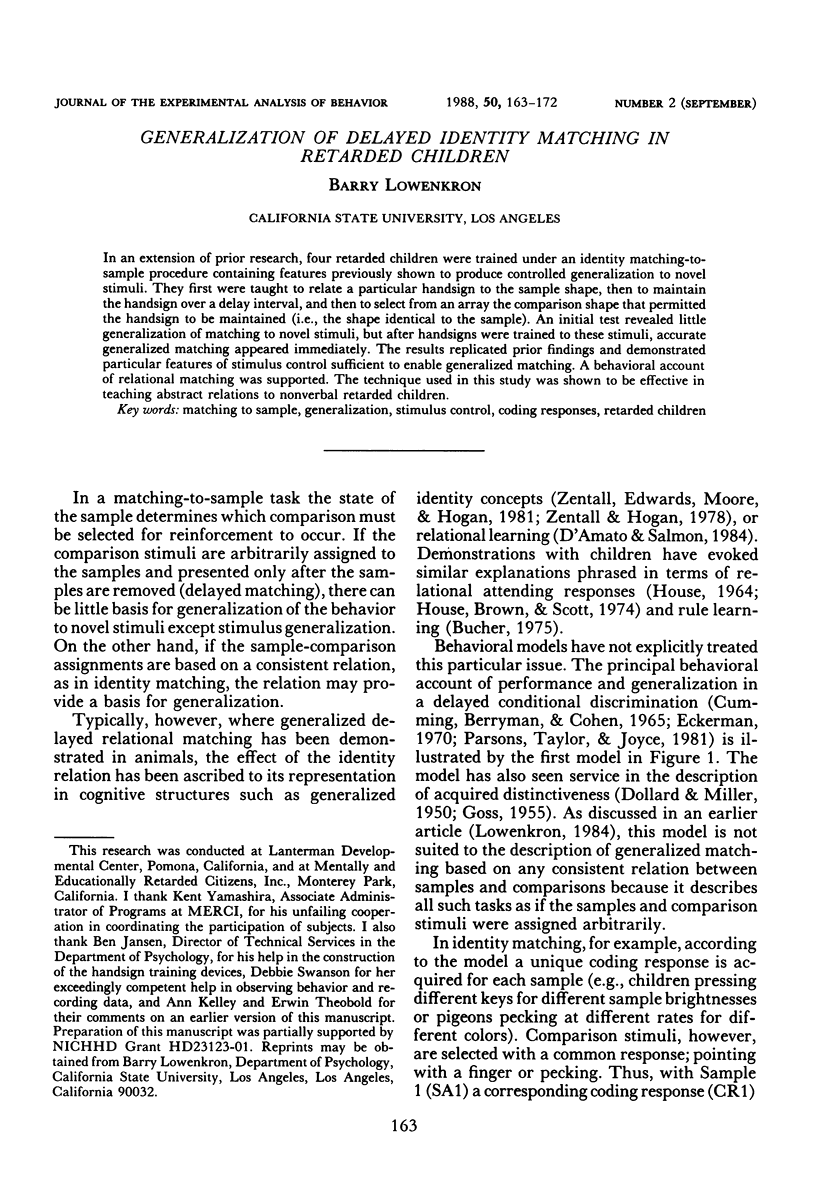
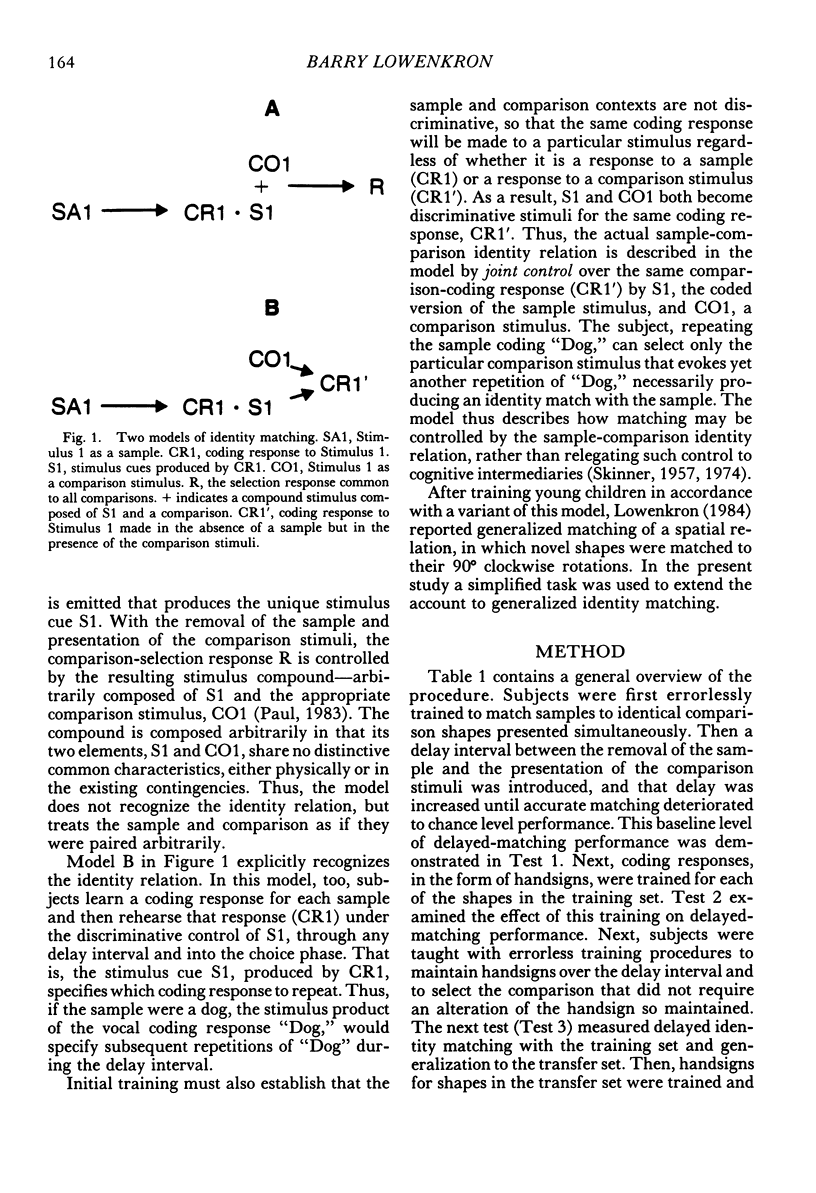
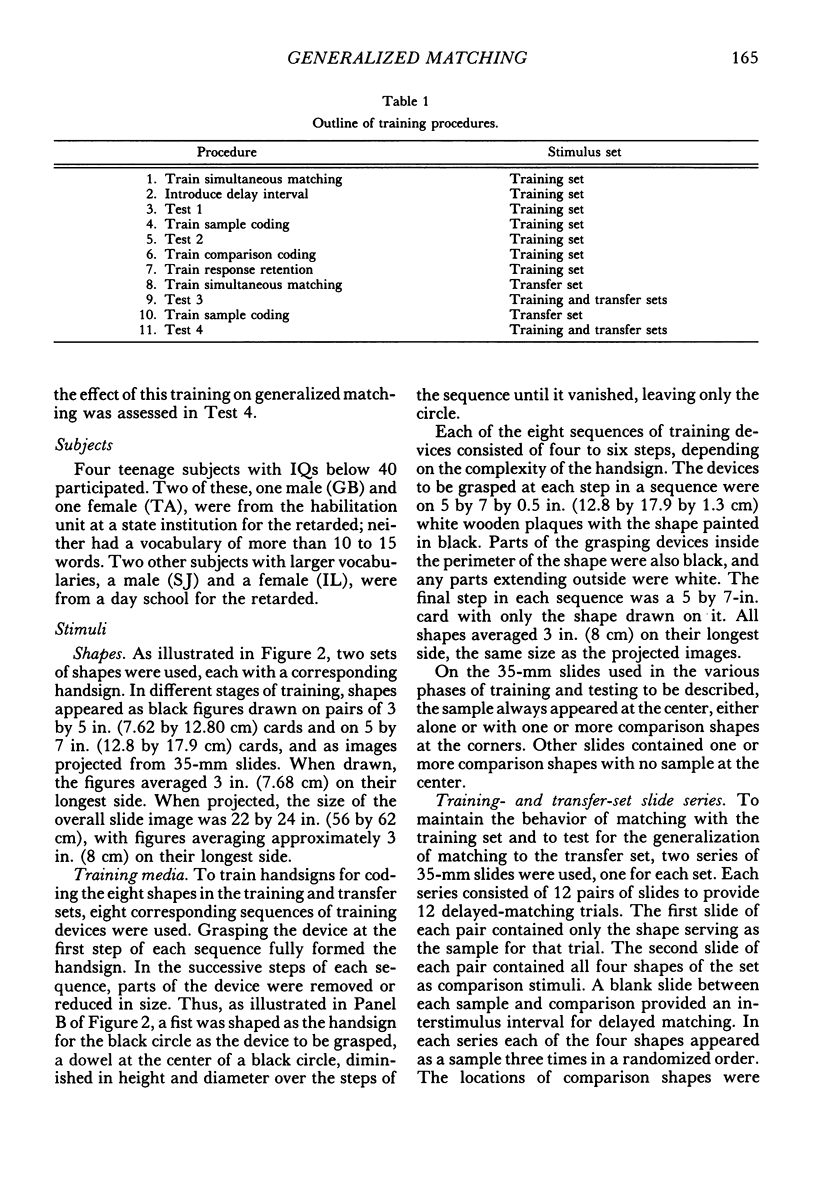
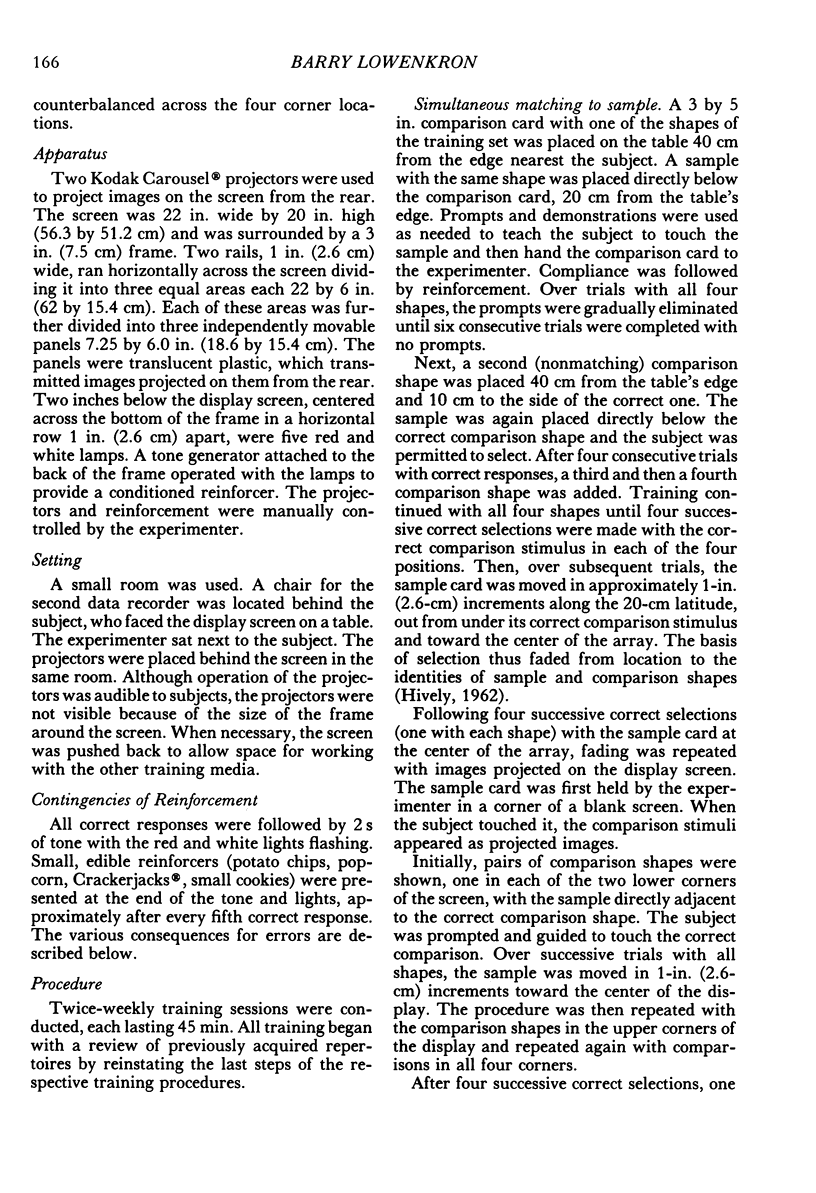
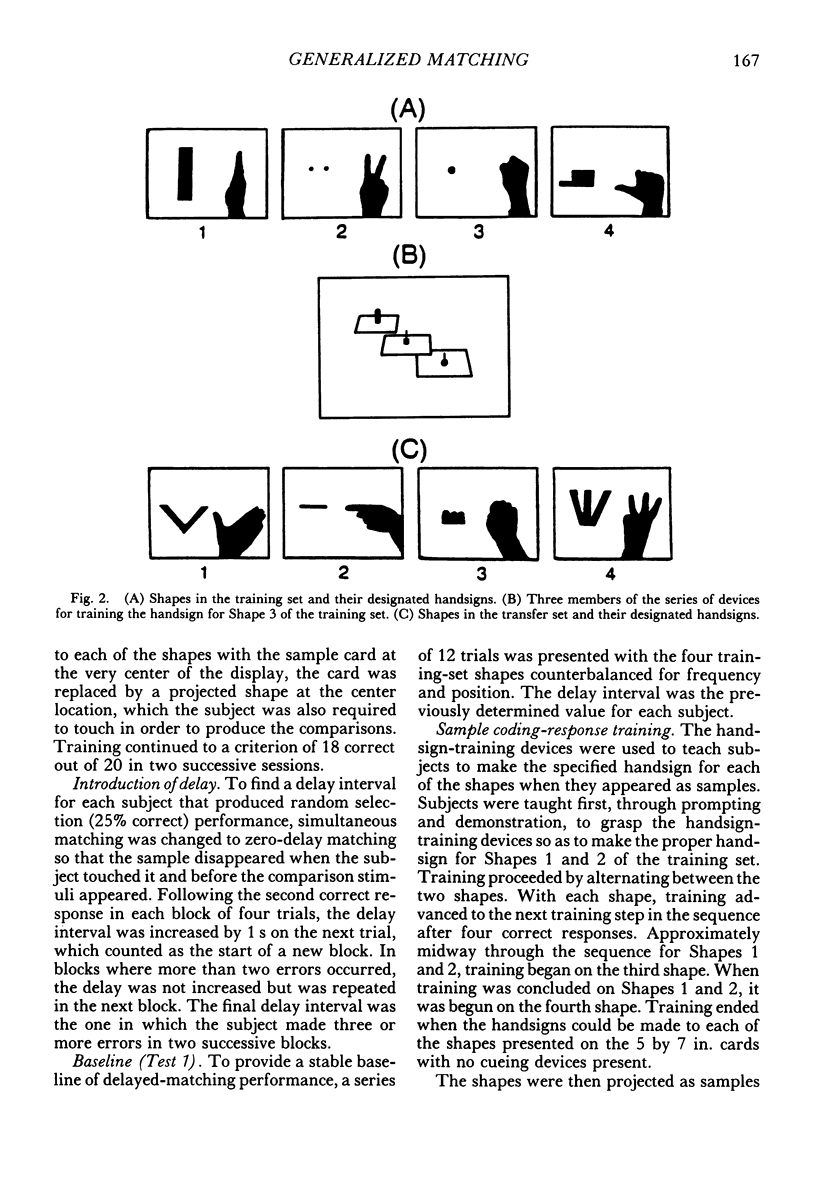
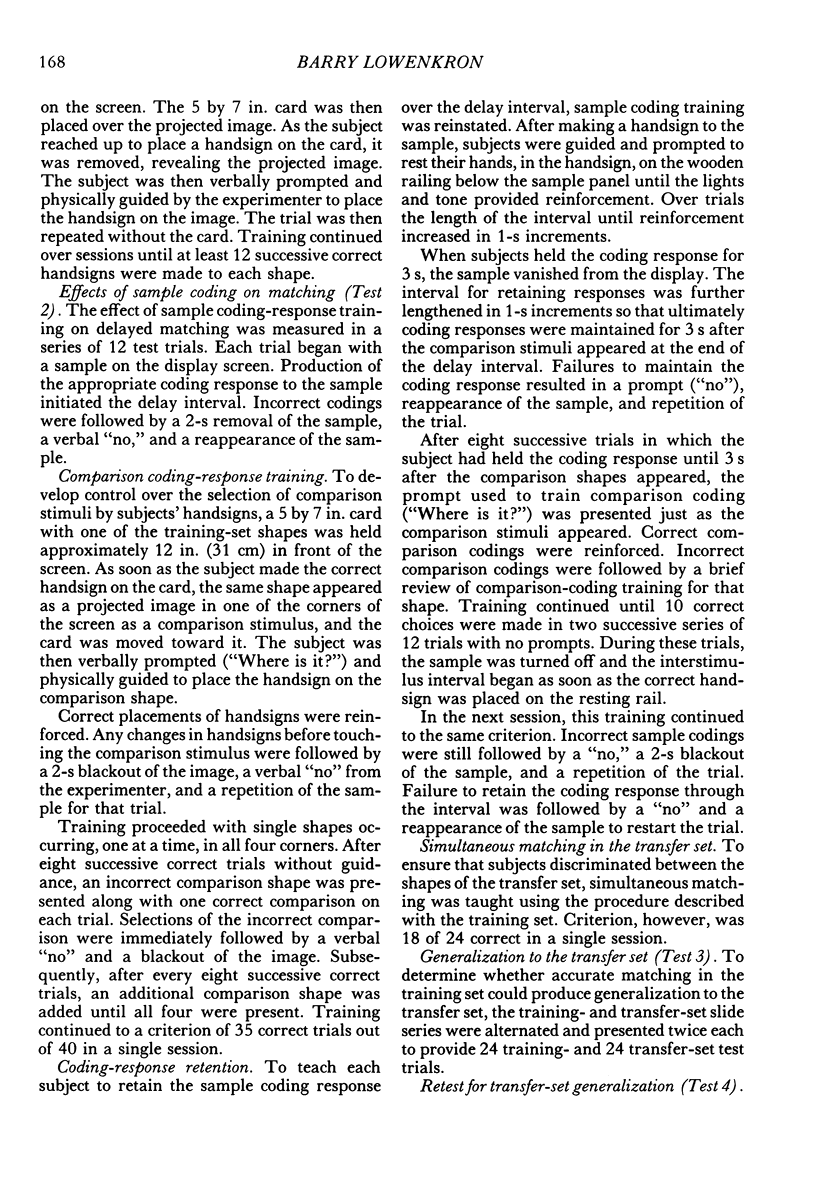
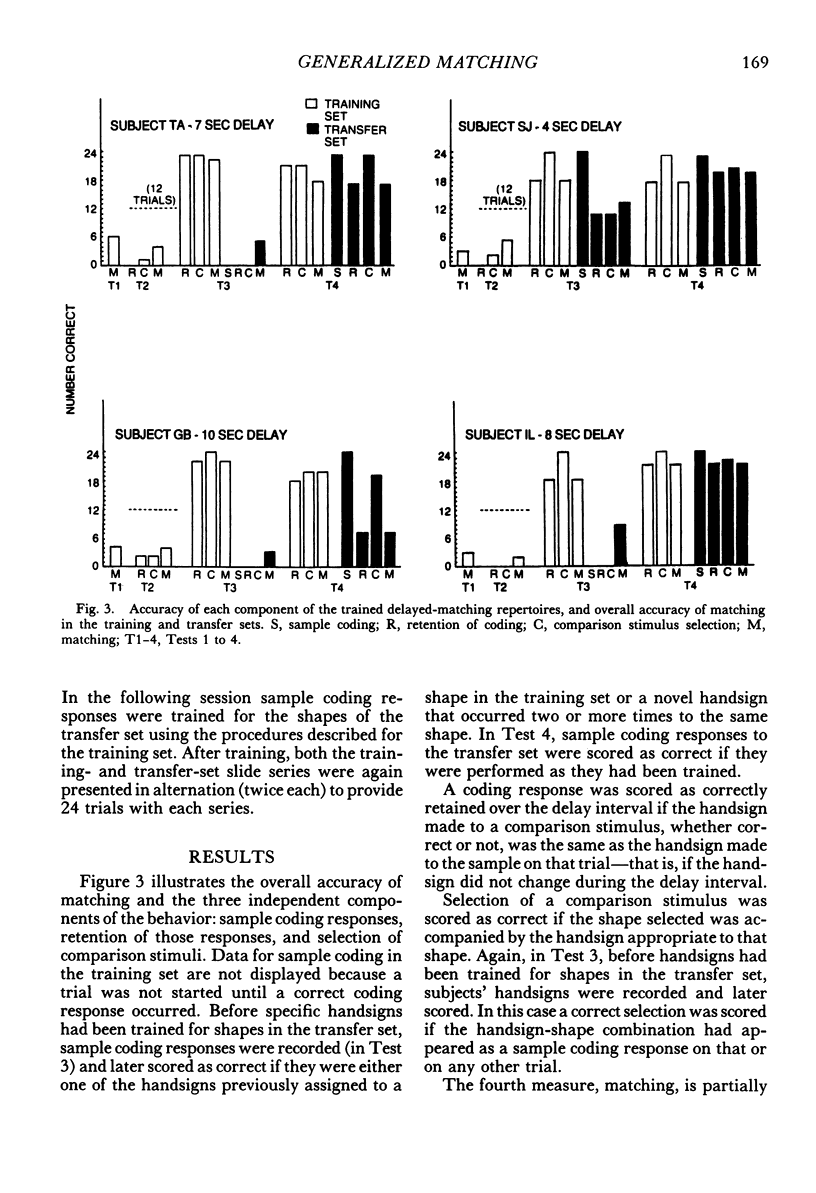
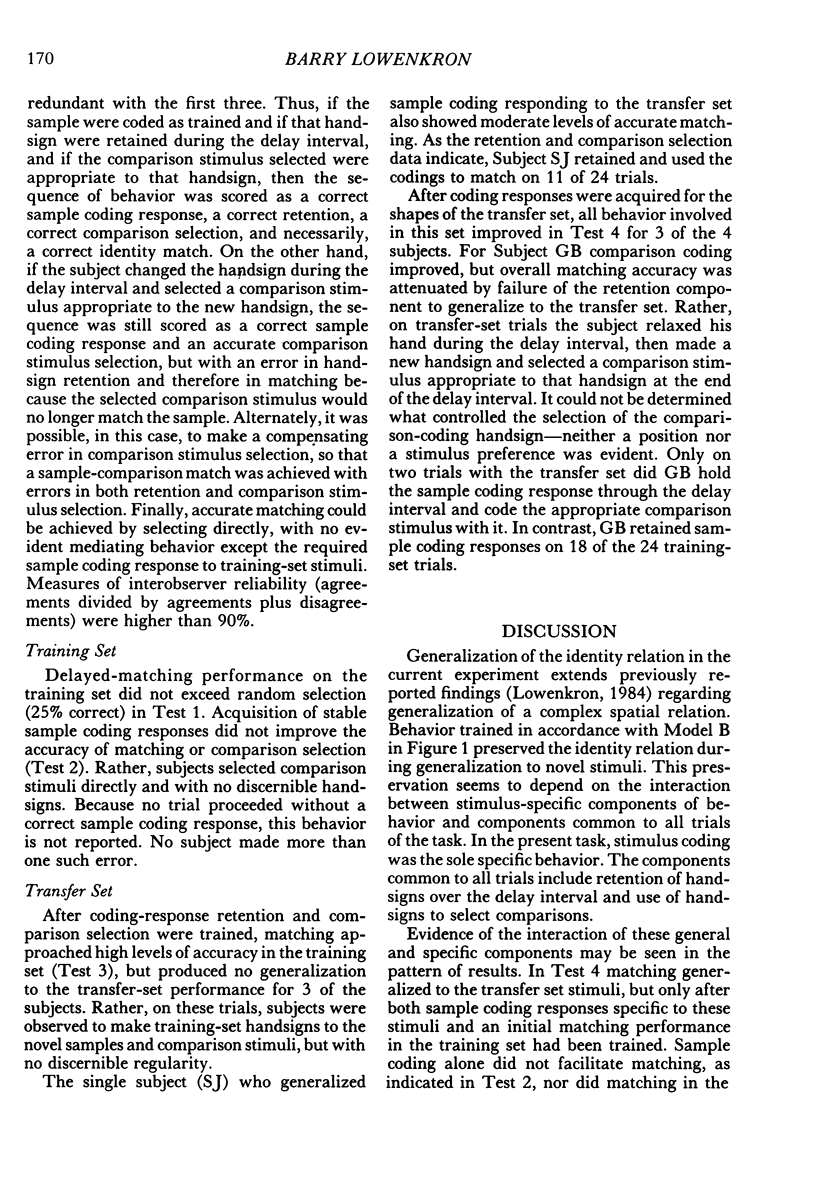
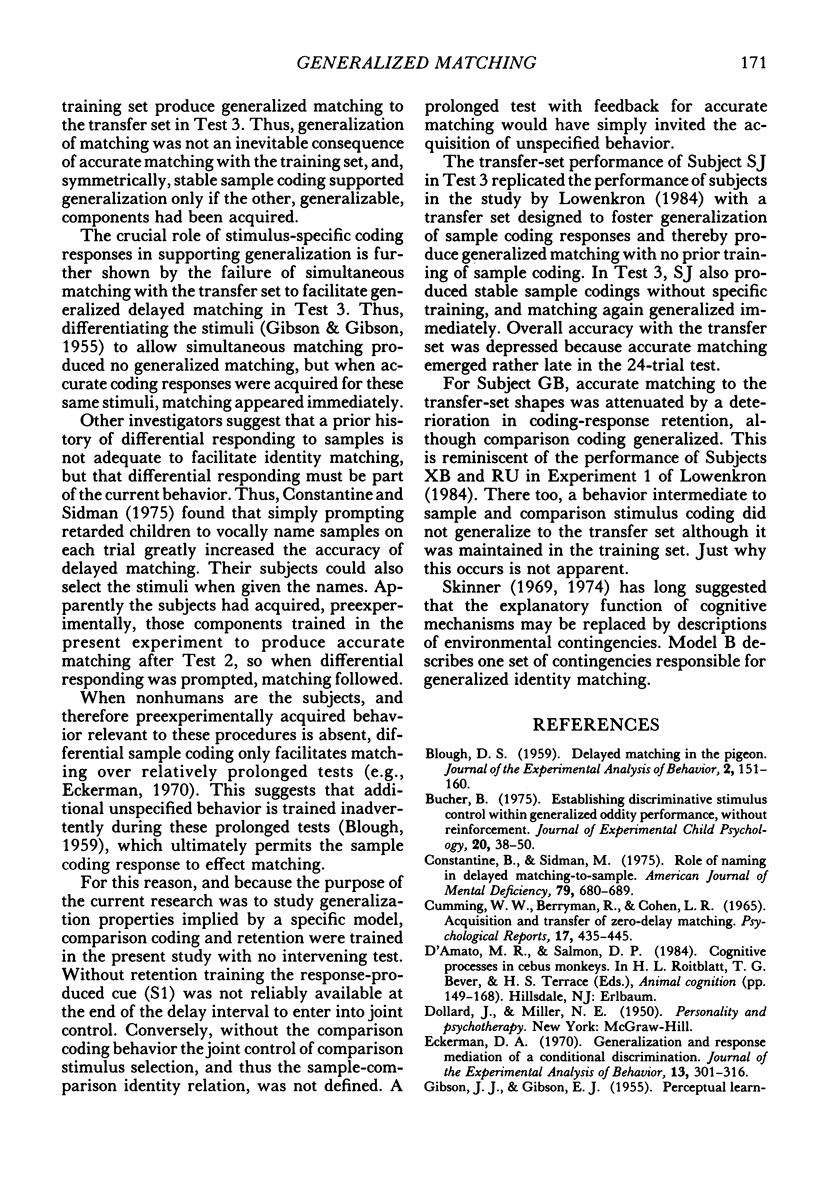
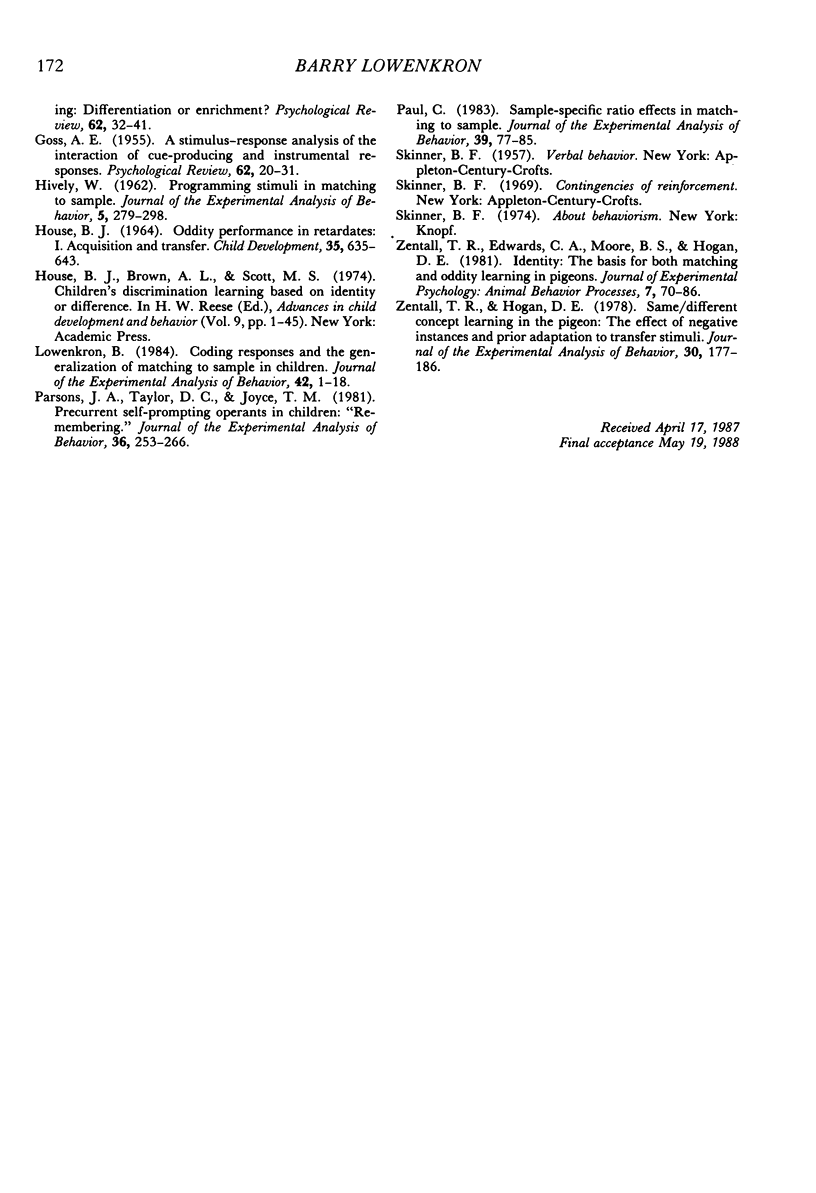
Selected References
These references are in PubMed. This may not be the complete list of references from this article.
- BLOUGH D. S. Delayed matching in the pigeon. J Exp Anal Behav. 1959 Apr;2:151–160. doi: 10.1901/jeab.1959.2-151. [DOI] [PMC free article] [PubMed] [Google Scholar]
- Constantine B., Sidman M. Role of naming in delayed matching-to-sample. Am J Ment Defic. 1975 May;79(6):680–689. [PubMed] [Google Scholar]
- Cumming W. W., Berryman R., Cohen L. R. Acquisition and transfer of zero-delay matching. Psychol Rep. 1965 Oct;17(2):435–445. doi: 10.2466/pr0.1965.17.2.435. [DOI] [PubMed] [Google Scholar]
- Eckerman D. A. Generalization and response mediation of a conditional discrimination. J Exp Anal Behav. 1970 May;13(3):301–316. doi: 10.1901/jeab.1970.13-301. [DOI] [PMC free article] [PubMed] [Google Scholar]
- GIBSON J. J., GIBSON E. J. Perceptual learning; differentiation or enrichment? Psychol Rev. 1955 Jan;62(1):32–41. doi: 10.1037/h0048826. [DOI] [PubMed] [Google Scholar]
- GOSS A. E. A stimulus-response analysis of the interaction of cue-producing and instrumental responses. Psychol Rev. 1955 Jan;62(1):20–31. doi: 10.1037/h0039949. [DOI] [PubMed] [Google Scholar]
- HIVELY W. Programming stimuli in matching to sample. J Exp Anal Behav. 1962 Jul;5:279–298. doi: 10.1901/jeab.1962.5-279. [DOI] [PMC free article] [PubMed] [Google Scholar]
- HOUSE B. J. ODDITY PERFORMANCE IN RETARDATES. I. ACQUISITION AND TRANSFER. Child Dev. 1964 Sep;35:635–643. doi: 10.1111/j.1467-8624.1964.tb05201.x. [DOI] [PubMed] [Google Scholar]
- House B. J., Brown A. L., Scott M. S. Children's discrimination learning based on identity or difference. Adv Child Dev Behav. 1974;9(0):1–45. doi: 10.1016/s0065-2407(08)60313-4. [DOI] [PubMed] [Google Scholar]
- Lowenkron B. Coding responses and the generalization of matching to sample in children. J Exp Anal Behav. 1984 Jul;42(1):1–18. doi: 10.1901/jeab.1984.42-1. [DOI] [PMC free article] [PubMed] [Google Scholar]
- Parsons J. A., Taylor D. C., Joyce T. M. Precurrent self-prompting operants in children: "Remembering". J Exp Anal Behav. 1981 Sep;36(2):253–266. doi: 10.1901/jeab.1981.36-253. [DOI] [PMC free article] [PubMed] [Google Scholar]
- Paul C. Sample-specific ratio effects in matching to sample. J Exp Anal Behav. 1983 Jan;39(1):77–85. doi: 10.1901/jeab.1983.39-77. [DOI] [PMC free article] [PubMed] [Google Scholar]
- Zentall T. R., Hogan E. Same/different concept learning in the pigeon: the effect of negative instances and prior adaptation to transfer stimuli. J Exp Anal Behav. 1978 Sep;30(2):177–186. doi: 10.1901/jeab.1978.30-177. [DOI] [PMC free article] [PubMed] [Google Scholar]


